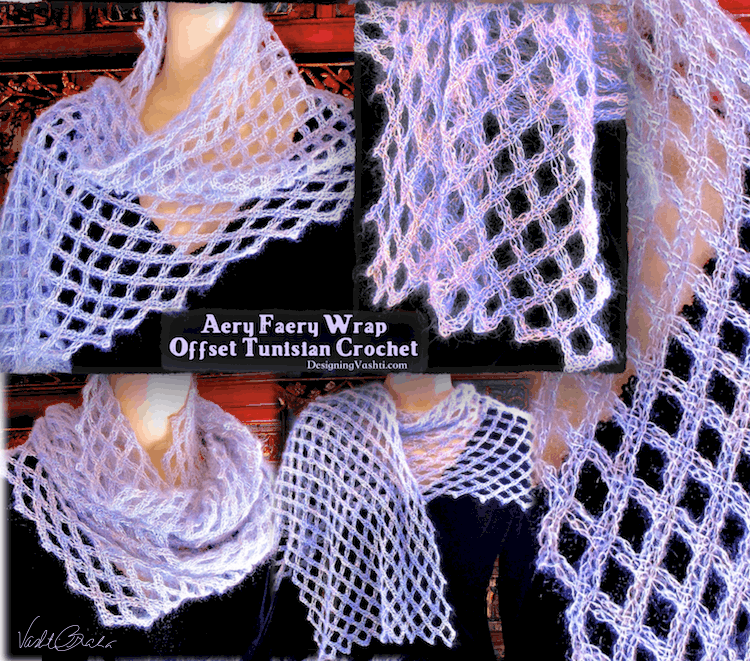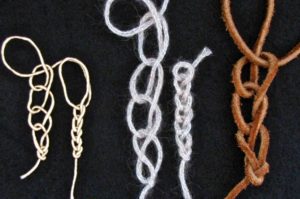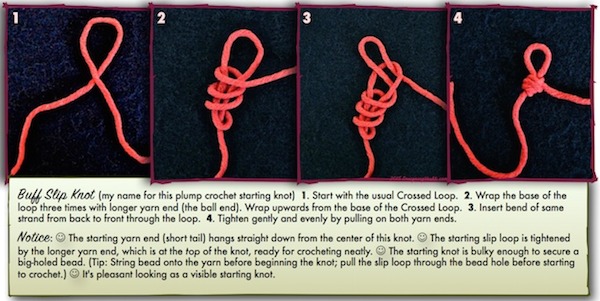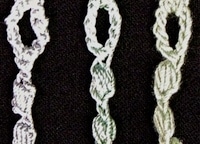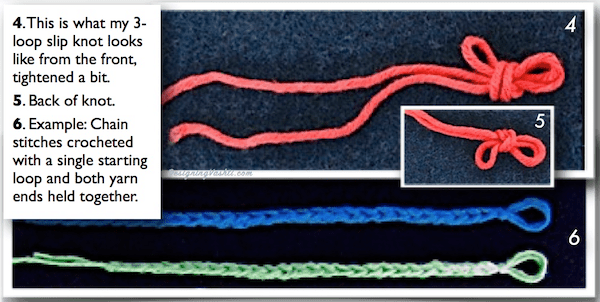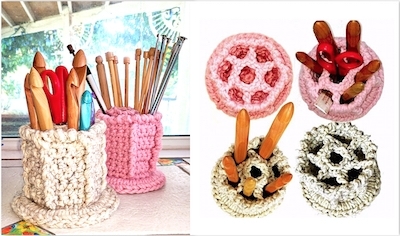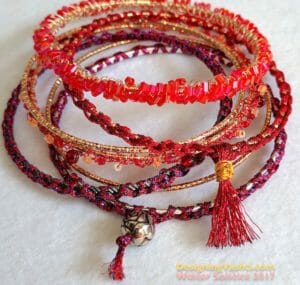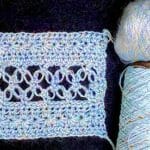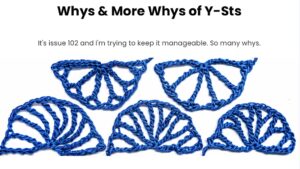How to videos are a great way to learn hand chaining. I viewed several this past week. My favorites are listed below.
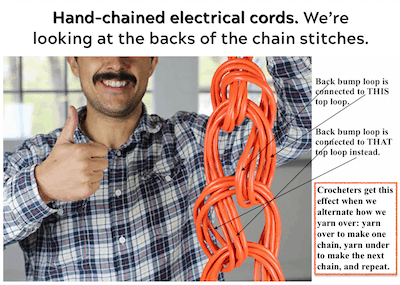
After watching so many hand chaining videos, I found that only some show how to do it the crochet way. Other videos show a knitting style, or as a form of knot tying. I’ve chosen a few video links for each approach so that you can try them and see which you like best.
Hand Chaining the Crochet Way

Hand chaining the crochet way means you’re using your fingers or whole hand the same way that you’d use a crochet hook. In crochet, if we put a loop on the crochet hook by winding the yarn around it, it’s called a yarn over. It’s also possible to just “grab” the yarn with the hook and pull it through with no actual yarn over. This has sometimes been called a yarn under. The yarn over is the standard, correct one.
Watch for when a hand chaining video shows the yarn over, or the yarn under, or mixes them. It’s tempting to use the yarn under when hand chaining because you can just reach through a loop, pinch the yarn, and pull it through. The simple pull-through of the yarn under makes for very quick hand chaining! However, if you plan to do most of your crocheting with a crochet hook, the yarn over is a very good habit to establish.
Three videos that show yarn overs:
- Amy Kleinpeter of Swellamy Crochet demonstrates arm crocheting with true yarn overs. At 1:04 in the video, she specifies how to yarn over: “Notice my hand is going under the yarn, and pulling it through.” This is a true crochet yarn over. The hand moves the same way as a crochet hook would.
- Vickie Howell in the 2014 Yarnspirations arm crochet video
- Sara Delaney’s colorful Finger Crochet with many strands.
These next three videos show yarn unders:
- Donna Wolfe of Naztazia.com starts off her video showing hand chaining by pinching the yarn with her two fingers to pull it through a loop: a yarn under. When she shows how to do the same thing with a crochet hook, she uses a standard yarn over.
- Watch Kathleen Sams make hand chaining look so fast and easy with yarn unders and the thickest chenille yarn ever!
- ThePreschoolMommy adds adorable sound effects to her yarn unders: “The fingers go ‘Hel-LOO’ and bite the yarn and pull it through.”
By the way, in most of these the adjustable slip knot is made instead of the locking one. Donna Wolfe uses the locking slip knot. Now try some of the other videos below for contrast. Whichever one you enjoy the most is the best one for you!
Hand Chaining the Knitting Way
Hand chaining with a knitting approach means that a finger or hand is held like a knitting needle while a loop is worked off of it. A possible advantage is that one tends to work at a smaller scale, keeping the loops closer to the fingers. This can help one to control the size of each chain stitch.
- This video is a good example of a knitting style of hand chaining. She keeps a loop on her left finger, wraps the yarn over it with her right hand, then pulls the loop over the new loop and off the finger. (It reminds me of spool knitting, if the spool had only one peg.).
- Laura Eccleston of Happyberry Crochet does it the same way. She cautions that it is fiddly, not very easy.
- Here’s a variation by Beadaholique. She uses beads and beading thread for making a necklace.
Hand Chaining the Knot Tying Way
The most noticeable thing to me about a knot tying approach is the terminology. A rope is bent, which is called a “bight,” and then pushed through a loop. Terms like “sinnet” or “knot” are used; never “stitch.”
There are a few other differences too. The purpose of hand chaining in these videos seems to be of practical interest mainly to men who need to make long lengths of heavy rope more manageable for storage, cleaning, or for a “quick deploy” survival bracelet. It’s also called a “zipper sinnet” and “chain shortening” because it quickly unravels when the rope is needed. It ranks as one of the Four Knots You Need to Know.
Here are a few knot tying videos on hand chaining:
- Animated Knots: “How to Tie the Chain Sinnet.”
- Imminent Threat Solutions: “Knot of the Week: Chain Sinnet.”
Which videos do you enjoy? Which one can you do the most quickly? Which one produces the nicest-looking chain stitches for you?
